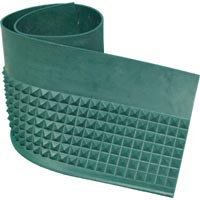How is rubber 'vastly elastic'?
Elasticity is a valuable property of rubber. Natural rubber can last 9 times, then restore the same shape. Other objects, in solid form as well as soft, are not comparable to rubber in elasticity.
Natural rubber is obtained from sap. More than 100 years ago, chemists began to study the composition of natural rubber. They put rubber in the bottle, increase the heat, isolate the air, this is called drying. After drying the rubber, one obtained a type of liquid, by studying this type of fluid, they knew that each of its molecules had 5 carbon atoms and 8 hydrogen atoms. Chemically, it is called Isopren.
Can you use Isopren molecule to make synthetic rubber?
 (Photo: kardwell) It was not until 1879 that this problem was resolved. French, Bousalt chemist, took Isopren resolved after drying rubber, heated with concentrated acid salt, obtained a kind similar to natural rubber. He dried this new product and obtained Isopren again.
(Photo: kardwell) It was not until 1879 that this problem was resolved. French, Bousalt chemist, took Isopren resolved after drying rubber, heated with concentrated acid salt, obtained a kind similar to natural rubber. He dried this new product and obtained Isopren again.
This is an extremely important finding. If rubber is said to be a house, Isopren is the brick that built that house. The molecule that makes up the rubber is each small molecule Isopren linked to.
Because while moving, the molecules are always intertwined, so the chain of rubber forming molecules cannot be in the plane form but must be in a curved shape, moreover, many molecules are stuck together, like a set of fibers. wool does not follow rules. When using traction, these curved molecules can be stretched out a bit. After the drag force disappears, the molecules shrink back to the old curved state. Just as the object is made from yarn, when you pull it, it stretches out, does not pull, it returns to the old state. This is why rubber is so elastic.
Rubber, in addition to being able to make tires and tubes, is also used to make anti-vibration materials in areas such as cars, railways, boats and bridges. In the world today there are several thousand bridges using rubber to cushion the load capacity.
- Flexible rubber keypad, programmable keypad
- Rubber wires can stretch up to 8 times
- Elastic cord made of material more durable than steel 200 times
- What does rubber molecule have to do with mass migration?
- The skin-thin leather man, elastic like rubber
- Video: 6-barrel machine gun made of elastic elastic wire
- Guayule - An easy-growing shrub for pure rubber latex to make tires of future vehicles
- Create a super-elastic material that can generate electricity when pulled or compressed
- Video: Stun with a full process 'hardship' to create a rubber band
- Use 'elastic foam' to print artificial 3D hearts and more
- New research reveals a method to increase rubber latex production
- The person who has the ability to 'peel the skin' neck stuck on his face
 'Fine laughs' - Scary and painful torture in ancient times
'Fine laughs' - Scary and painful torture in ancient times The sequence of numbers 142857 of the Egyptian pyramids is known as the strangest number in the world - Why?
The sequence of numbers 142857 of the Egyptian pyramids is known as the strangest number in the world - Why? History of the iron
History of the iron What is alum?
What is alum?